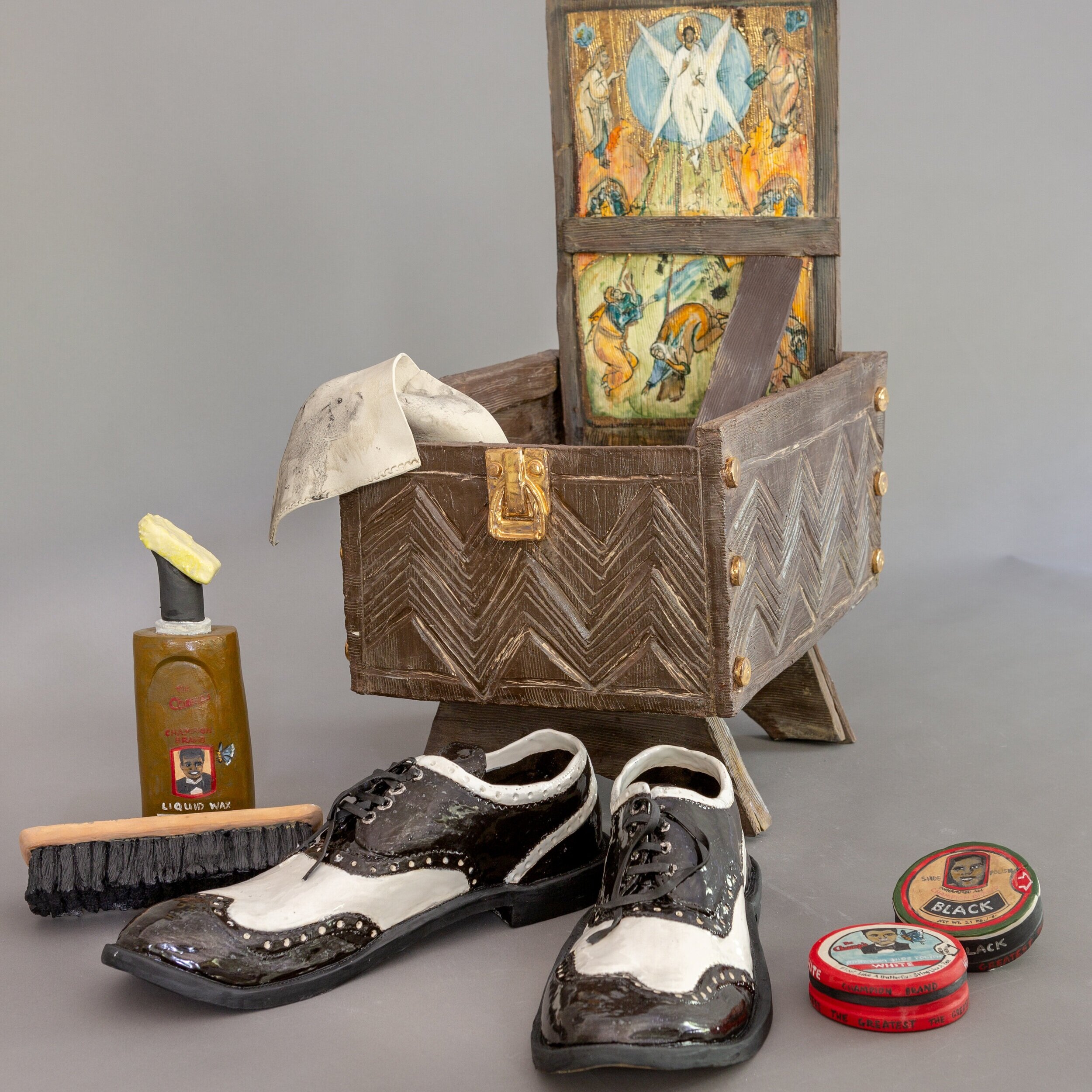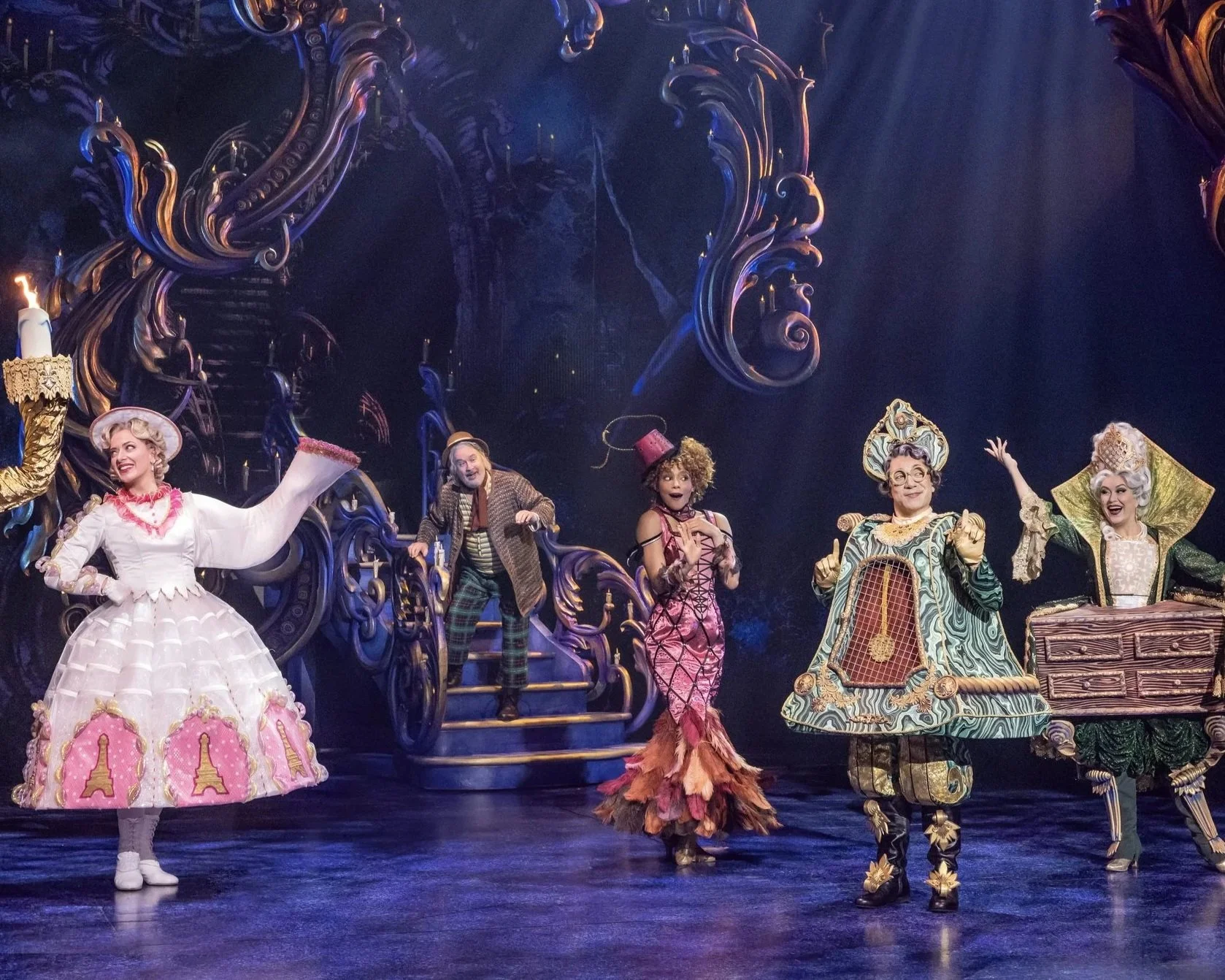Neill-Cochran House Museum presents “If These Walls Could Talk”

The Neill-Cochran House Museum (NCHM) was abuzz last month as it hosted an immersive, one-of-a-kind experience at its new exhibit and artistic collaboration “If These Walls Could Talk.” The exhibition places visual artist Ginger Geyer’s modern porcelain sculpture into the historic spaces of the museum.
A film of conversations between two adolescent girls, one white and one black, narrates the exhibition and provides historical and social context. Geyer and actor Jennifer R. Cumberbatch collaborated to develop the characters, Chlora and Ruby Virginia played by Alexa McGlathery and Araya Sue, respectively. The girls’ conversations highlight the similarities and dissonances between past and present, high art and material culture, and the experiences and treatment one would have received in a home like the NCHM Greek Revival-style mansion depending on race, class, gender, and socio-economic status through time.
“This exhibit is a collection of Ginger Geyer’s art that she has been curating over 30 years,” Cumberbatch explained. “Initially it was just going to be solely an exhibition of her art in the back room.”
That quickly changed after Geyer took a tour of the house and learned about the dependency, a secondary building that housed enslaved black artisans who built the Neill-Cochran House. This left a lasting impression on her, and she began to reflect on her art and how ruminating on how she could highlight more aspects of the history of the space; that’s when talks with Cumberbatch got deeper.
“I asked her why she wanted the art to go in the direction of celebrating the dependency and the history associated with it,” Cumberbatch said. “She really felt like that was the new frontier for her work. And of course, my response to that was ‘if I could be a full collaborator in creating the performance pieces associated with it, then I was fully on board. But I didn't want it to be just singing on the front porch, minstrel style.”
And from there, the two worked to create a project that highlighted the work of Black people in Austin’s history and those who once lived in the house. Along the way, Geyer has encountered a bit of her own culture shock, looking at her own past through a new lens.
“We talked a lot about her burgeoning awareness of white privilege and African-American contributions to society and her realizing that she had grown up in a homogenous town in Arkansas that had been a sundown town,” Cumberbatch detailed. “Her grandfather was a leader in that town.”
Geyer took much of this into consideration with her art as she developed the exhibit. Her aim is to express the messy mix of trivial and profound, joy and grief, time compressed into memory — the fullness of life, and the unintended consequences that follow many good intentions.
“Porcelain is an ideal medium for exploring “white fragility”—the phenomenon of defensive moves that white people make when challenged racially,” Geyer explained in her welcoming statements. “This antebellum home has provided the ideal context to explore the “niceties” and historic distortions that can keep us apart. You may be challenged by pieces such as my Monkey Mind Marriage, but please know the display is an intentional interrogation of the obliviousness that I, myself, am learning to overcome.”
While this artistic endeavor may be a new horizon for Geyer, many of these are a story all too familiar for people of color, including Cumberbatch. Although she is proud of the work the two have created, she admits there are times when it’s difficult to reconcile the emotions connected to the treatment of Black people in the past.
“Those emotions really do well up,” she confessed. “The thing that comforts me is, when we were filming the fictionalized version of the artisans and the dependency, I kid you not, I could feel this great cloud of witnesses that have gone before, just applauding our efforts, even though their names weren't mentioned. Somebody deigned to speak their contributions into the earth. I know that sounds like a really high and lofty thing, but it brings me so much comfort to know that I can visually represent that, ‘Hey, there was another people, there was another set of contributions’ and we that are here in the earth now are going to represent that to the best of our ability so that anybody that views this exhibit, anybody that sees this performance, will have to give them their due.”
Cumberbatch also performed a series of one-woman shows inspired by Geyer’s artwork during the run of the exhibition. Rowena Dasch, executive director of the NCHM, explains, “Art is a gentle provocateur, allowing people to let their guards down and explore concepts and issues they hadn’t before, or to explore them in a new way. The juxtaposition of Geyer’s modern art and Cumberbatch’s innovative artistic performance within the historical setting of an 1850s era mansion built by enslaved black artisans is arresting.”
Although the exhibit is wrapping up, there are multiple events lined up related to the show, spanning from March to May.
Oratory Sunday
March 8:
Oratory Sunday is a historical fiction call and response between historic Wheatville’s Reverend Jacob Fontaine and Reverend H.B. Rose of the Neill-Cochran House.
In addition to Jennifer Cumberbatch’s performance, Reverend G.V. Clark and Mary Cochran Bohls on behalf of her grandfather, H.B. Rose, will be presented with Jacob Fontaine Awards for their faithful contributions and services to the community.
Make America Sing Again
March 26:
Make America Sing Again is Jennifer Cumberbatch’s salute to the great Queen of Soul, Aretha Franklin, in addition to other American vocalists. The performance was inspired by Ginger Geyer’s sculpture Make America Sing Again, which was inspired by the hat worn by Aretha Franklin during her special guest appearance at Barak Obama’s Presidential Inauguration.
The event will also honor some of Austin’s vocal heroes with Malindy Awards, named after African American Poet Paul Lawrence Dunbar’s character Malindy.
Good Friday Easter Egg Event
April 10:
Join the Neill-Cochran House Museum for its annual family-friendly Easter egg event. In addition to egg dying for children, this year’s festivities will include a Red Velvet Cake competition with a celebrity judge and audience taste-testing and vote. Jennifer Cumberbatch’s Beats All I Ever Saw will feature music and dance to communicate the historic significance of the cakewalk. The performance and Red Velvet Cake Competition also serve to honor the significance to the Adams Family, who started the Adams Extract and Food Coloring business.
The performance is inspired by Ginger Geyer’s sculpture of a Sunbeam mixer covered in red velvet cake batter, titled Beats All I Ever Saw. The performance also serves as a recognition of Mary Cochran Bohl’s intense admiration of her Grandma Rose’s cake baking skills.
Ghost of Robert E. Lee
May 1:
There is an old legend that if you walk past the Neill-Cochran House at night you will witness the sight of General Robert E. Lee on the upper balcony. This legend was told amongst the freedmen of the historic Wheatville community. In her performance The Ghost of Robert E. Lee, Jennifer Cumberbatch builds upon this legend and the Ginger Geyer Mercy Seat sculpture with a live perforamce on the front porch of the Neill-Cochran House Museum. The performance will also feature the premier of the film If These Walls Could Talk: The House That Slaves Built.
The Ghost of Robert E. Lee is the powerful finale and closing reception of the provocative exhibition If These Walls Could Talk. Come enjoy refreshments, the scenic beauty of the Neill-Cochran House Museum, entertainment, and your last chance to join in the conversation.
Nick Bailey is a forward thinking journalist with a well-rounded skill set unafraid to take on topics head on. He now resides in Austin, TX and continues to create content on a daily basis.






